Friends of the Wildflower Garden

These short articles are written to highlight the connections of the plants, history and lore of the Eloise Butler Wildflower Garden with different time frames or outside connections and usually include personal commentary of the writer, not necessarily related to the Wildflower Garden. A web of present and past events.
October 2025
It is late October - only one weekend left to visit the Wildflower Garden. This month's articles are concerned with renovation, restoration and support for those efforts.
Articles
Update to the Wildflower Garden entrance
The North Meadow. - Uncovering the past
Salvaging plants and restoring land
The slow flower movement and why it is important.
Garden entrance renovation
The Minneapolis Park and Recreation Board (MPRB) is in the planning stages for a major renovation of the entrance approach to the Wildflower Garden. This will be the first real change to this area since the steps were put in during 1975 and the current front gate in 1990.

The purpose of this is outlined in the following MPRB project plan:
The Eloise Butler Wildflower Garden Entrance Renovation Project looks to renovate and reimagine the entrance into the wildflower garden. This project will improve the entry experience and access from the beginning as soon as visitors exit off Theodore Wirth Parkway all the way through the garden gates. Areas of focus include:
1. Improved walking trails and ADA access to the garden entrance gate from the existing parking lot.
2. A public gathering space for outdoor learning and education.

3. Enhanced welcoming experience by bringing the garden beyond the renovated entrance gate.
The Eloise Butler Wildflower Garden Renovation Project will build upon the vision outlined with the 2015-approved Theodore Wirth Regional Park Plan. This project will also follow guidance by the 2022 community findings that were developed and recommendations at that time.
Two public meetings have already been held and an on-line survey was available for interested parties to comment.
The MPRB planners have had two meetings with the Friends board of directors to review the project and receive our comments. We will continue to be involved as this project moves toward final planning stage.
For details of the two proposed example designs illustrated above and for updates on this project please visit the Wildflower Garden section of the MPRB web site.
The North Meadow. - Uncovering the past
The Greater Eloise Stewards have been uncovering parts of the past in the meadow north of the Wildflower Garden’s back fence and gate. This area was once open marsh and meadow with scattered trees on higher spots. It was kept moist by springs, seeps and water draining from Eloise Butler’s wildflower reserve.
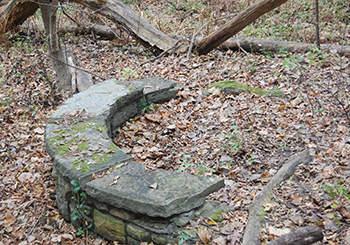
In recent decades views of the area have been obscured by the growth of dense forests of buckthorn. The paths in the area which lead to the Garden’s back gate, once a tunnel of buckthorn are now being cleared so the native plants that once were abundant there can receive sunlight and regenerate or be re-introduced as necessary.
Two historical items of significance in this area, now more visible, should be mentioned. First, the location and catch basin of one of the four natural springs that were active in the area of the Wildflower Garden before 1960 is now completely exposed, although in degraded condition as the masonry has been damaged and partially overrun by sediment from the adjacent hillside. The masonry is from a WPA project in 1939. The spring had a water bubbler mounted on it to prevent contamination. That was installed in 1916 when the Park Board created a walking path from Superior Blvd (now I-394) northward to the spring and then to Glenwood Lake (now Wirth Lake). This is how the spring picked up the name of “bubbling spring.” Another appellation of later years was “drinking spring.” Former Garden Curator Ken Avery related that it was where “I’m told, people used to have parties on spring water and gin.” That may be entirely true as in the 1920’s and ‘30s during the time of Prohibition, you could drive on some of the paths back to this secluded area. By 1954 the flow from the spring was just a trickle.
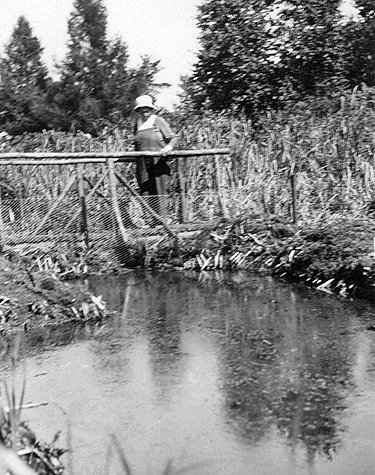
The second item of significance is that clearing out the area of invasives not only begins the restoration but will expose the area where Eloise Butler constructed her “mallard pool” in 1932. This large open water pool was fed by the runoff channel from the Wildflower Garden and from a drainage channel from the bubbling spring area - both of which are now quite visible. Her pool was bordered with numerous wetland species that she planted.
Parts of this meadow are open water today, but the flow and mixing of water in the area is somewhat restricted by the gravel pathway that bisects the north western side of the area. This was installed in 1975 over the top of the 24 inch water pipeline that was installed in 1957 to allow pumped water from Bassett’s Creek to flow when needed to Brownie Lake and re-supply the chain of lakes.
Below: Part of the extensive clearing of buckthorn in the north meadow done this past month by the Greater Eloise Stewards.
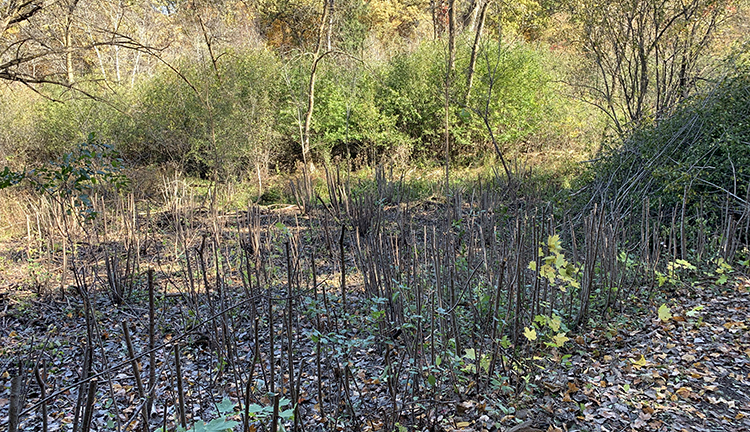
Jim Proctor, who leads the Greater Eloise Stewards, has been in contact with the watershed district to get them interested in doing a hydraulic study of this area which would provide some future direction of restoration work for the otherwise neglected meadow.
Salvaging plants and restoring land
Throughout the history of the Wildflower Garden, rare wild species have been propagated and rescued from the advances of civilization. When a roadway was being cut, when a bridge was being put it, when habitat had become degraded, plant rescue took place. Other interested parties have done this as well and similarly.
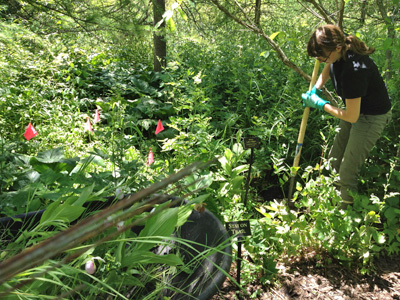
Two contemporary examples: the Wildflower Garden and the Minnesota Landscape Arboretum have both taken part in Showy Lady’s Slipper rescues and relocations, and in protecting and re-generating their populations of the rare Minnesota Dwarf Troutlily.
In decades past, protection and restoration of native fauna and flora was a minority endeavor. It has taken the decline of the butterfly and bee populations, which has generated general public interest, to now have a sufficient mass of effort to tilt the scale from rescue to restoration. The type of public awareness will hopefully now apply to the broader picture.

The area of land conservation is another sector of the salvage and restore story. We have a number of private groups and institutional groups plus private individuals here in Minnesota that are doing their part in this effort. I would like to point out one out-of-state effort, the Natural Land Institute in Illinois. This non-profit organization acquires an interest in lands the are remnants of original habitat or of such natural significance that restoration can salvage them. The preserves created are somewhat similar to the Scientific and Natural Areas created in Minnesota by the Department of Natural Resources. I mention this group because the Friends of the Wildflower Garden are acquainted with the groups executive director who is a supporter of the Friends, a former lecturer at one of our annual guest lectures and was the former operations director of the MN Landscape Arboretum - Alan Branhagen.
Take a look at the work they do at this web link.
Below: Bluebells in the floodplain forest of Oxbow Springs Preserve at Pecatonica, IL, one of the preserves of the Natural Land Institute. Photo NLI

The slow flower movement and why it is important.
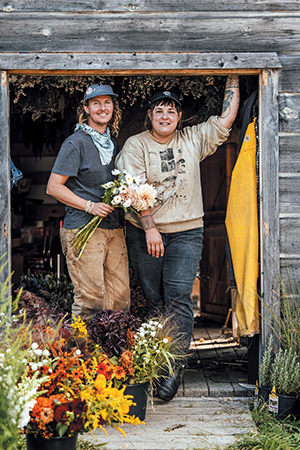
Decades ago almost any cut flower arrangement you wanted to buy was produced in the United States and most likely produced regionally close to you. This all changed in the 1990s when the US government changed some policies that allowed cut flowers to enter the US without many restrictions.
This created a boom in the cut flower business in low cost economies such as Ecuador, Columbia, Peru, Ethiopia and others. Ecuador today is the third largest exporter of cut flowers. Today most cut flowers come by air from such countries. One of the economies of scale in these economies is the lack of or minimal regulation of the use of fungicides, insecticides and other ‘cides’ which are used during the entire growing season for these flowers.
The side effects of low cost cut flowers in US markets are the increasing adverse medical effects on those who work in the flower trade, including those who simply handle the flowers after they are cut. A number of research teams in Mexico, the Philippines, Ecuador and others have begun to provide evidence of the long-term physical and neurological symptoms these people and their families are incurring.

Even higher cost economies have created issues with large-scale trade. In the Netherlands the bulb trade it is world famous for routinely treats bulbs for shipment with a chemical that has the same chemical structure of the drug used to treat infections of the deadly Aspergillus fumigatus fungus , which is now spreading around the work in a drug-resistant form.
One answer to avoiding these disasters is better regulation in the countries involved, but one reason for the explosive flower production in these countries is escaping such regulation. Another answer is the encouragement of locally grown, sustainably grown product. This requires a change in mindset of flower buyers in the US. It requires us to not demand any flower we want regardless of the growing season or to expect perfectly polished lush blooms. The availability of perfect flowers regardless of season results in the problems created.
In 2014 Debra Prinzing founded the Slow Flower Society, an adaption of the slow food movement, trying to create an understanding of where the things we buy come from and trying to redefine our expectation of having every thing we want every day of the year.

A number of small flower growers in different parts of the US are trying to make a sustainable business of providing the cut flower business with product that does not require out of season availability and treatment with chemicals.
Find out where the product you are looking at comes from and what baggage goes with it. When you have an option give these slow flower movement growers a chance. You will find 15 such providers right here in Minnesota.
Suggested reading:
"Blooms Away - the real price of flowers." Carolyn Whelan, Scientific American Feb. 2009
"The Imprefect Bloom" - Maryn McKenna, Scientific American March 2025
Historical Photo
The office in the Eloise Butler Wildflower Garden secluded within fall color 75 years ago, from a Kodachrome by Martha Crone on October 15, 1950. Photo ©Friends of the Wildflower Garden.
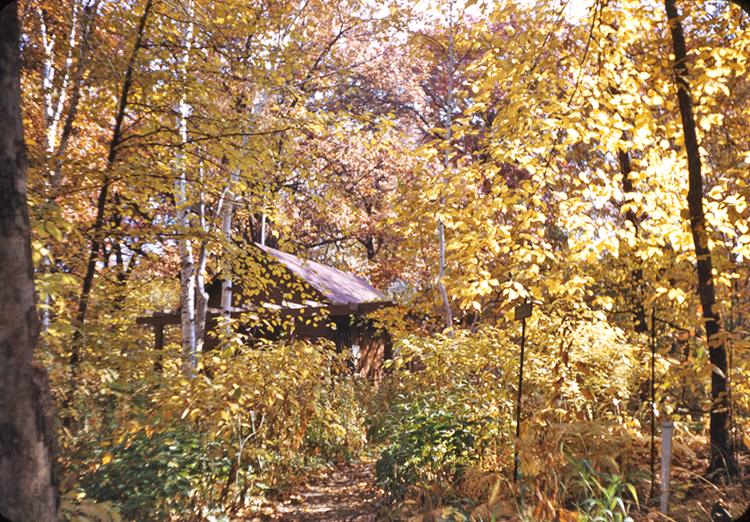
All selections published in 2025
All selections published in 2024
All selections published in 2023